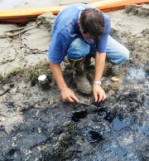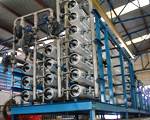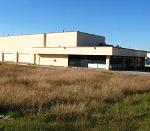Letters of interest in the program should be submitted by July 9.
Big Bend Power Station installs new equipment on all four units to lower nitrogen oxide emissions.
New research center is going for a Silver LEED rating and will use LT Technologies' systems to help achieve it.
The agency estimates that households will pay between $79 to $149 per year to further clean energy development.
Mayors from California, Washington, Massachusetts, Arkansas, and Texas signed the resolution.
Housing and Urban Development will encourage smart growth, location efficiency and green communities.

Researchers from several organizations tested visible near infrared light with diffuse reflectance spectroscopy to determine the presence and amount of oil in Louisiana soils.

Met-Mex Peñoles has used reverse osmosis membranes to further treat municipal wastewater from Torreón City for its boilers over the last 12 years.
- By Renato Ramos, Peter Aerts, Enrique Guzman, Juan Pacheco
The U.S. Department of Agriculture's Animal and Plant Health Inspection Service has quarantined specific areas, and if you are moving from one of them, you had better get an inspection certificate.
In its Clean Watersheds Needs Survey, EPA summarizes data from 47 states and predicts the nation will need most of the money for wastewater treatment and collection systems over the next 20 years.
Lead paint rule spurred RTI International to develop a method that uses a simple, portable turbidity meter that measures the amount of light blocked by suspended particles in solution.
Clinton Climate Initiative’s Magaziner, FERC Chair Wellinghoff and Secretary of Commerce Locke to speak at Virtual Energy Forum.
The Datong mine ventilation air methane abatement system will use MEGTEC's Vocsidizer technology.
The group's management process re-establishes the balance between plant growth and the behavior of herding animals.

A targeted community and stakeholder outreach program has enabled Arlington to earn additional grant funding for its redevelopment program.
- By Lexin Murphy, John Sallman